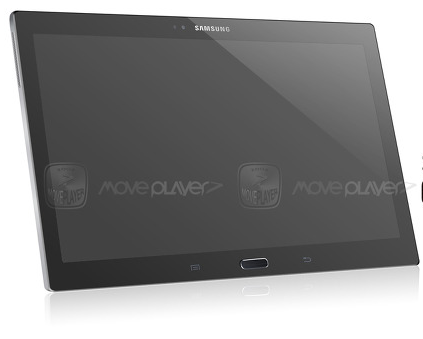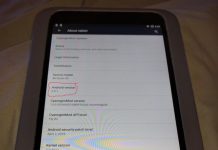After the triumph of the generic 7-inch tablet as everyone’s favorite cheap digital companion, we now are seeing manufacturers, and especially Android OEMs, pushing in the opposite direction, with ever larger devices.
Samsung, virtual creator of the phablet category with its Galaxy Note devices, is now upping the ante even further with reports of a huge Galaxy Note 12.2 device, larger than most actual tablets.
Acer, meanwhile, as reported on Slashgear, has just announced in time for the IFA Consumer Electronics show in Berlin an even huger 24-inch all-in-one Android desktop, the DA241HL, running on a NVIDIA Tegra 3 chip, the same (under various model numbers) found in first-generation Google Nexus 7 tablets and most current higher-end 10-inch tablets (including my own ASUS MeMO Pad Smart ME301T).
And not to be outdone in the humungous stakes, Panasonic is announcing for IFA a 20-inch Android tablet, claimed to be “the world’s thinnest and lightest 20-inch 4K tablet.”
 Why the sudden rush for size? Performance anxiety among manufacturers actually might be part of the reason. The 7-inch space has become fiercely competitive, with Chinese no-brand manufacturers leading the race to the bottom, and Google’s second-generation Nexus 7 doesn’t help.
Why the sudden rush for size? Performance anxiety among manufacturers actually might be part of the reason. The 7-inch space has become fiercely competitive, with Chinese no-brand manufacturers leading the race to the bottom, and Google’s second-generation Nexus 7 doesn’t help.
Manufacturers with more premium brands, and arguably better technology, are having to look for fresh ways to differentiate themselves, and sustain their unique selling points and brand value, in the Android space. No surprise to see, for instance, Samsung pushing the size envelope in its Galaxy Note line, which delivers its unique S Pen screen writing technology.
You might also argue that Apple’s iPad has locked down the fixed-size principle, and other manufacturers are having to show their distinct value by pioneering other formats. I suspect there is an element of this at work.
 Above all, though, the proliferation of sizes shows once more how versatile the Android platform is—and how pervasive it’s becoming. With everything on offer from dongle-size Android mini-computers to Android wallscreen TVs on offer, manufacturers are realizing how far they can stretch. Expect to see more sizes and more baroque devices to come.
Above all, though, the proliferation of sizes shows once more how versatile the Android platform is—and how pervasive it’s becoming. With everything on offer from dongle-size Android mini-computers to Android wallscreen TVs on offer, manufacturers are realizing how far they can stretch. Expect to see more sizes and more baroque devices to come.
And does it matter for e-books? Not everyone wants to read on their desktop or monitor, of course. But for those who do, the option is there. And I could see some readers opting for portfolio-size tablets, especially for larger size art books.
The really interesting question is whether these remain standalone devices at all, or simple access points for a domestic network or pervasive data cloud. Tablets arguably aren’t far away from that already. (Who’d really have a use for the form factor without the Internet?) And as that paradigm moves closer, so the sizes, types, and designs of devices will multiply.

































Perhaps what we really need is an internet connected projector. It can project onto any surface so we can keep it to ourselves or share with a large audience. It has a connector to project to our eyeglasses HUD style and some future version will have a BlueTooth connection to an inter-cranial receiver.